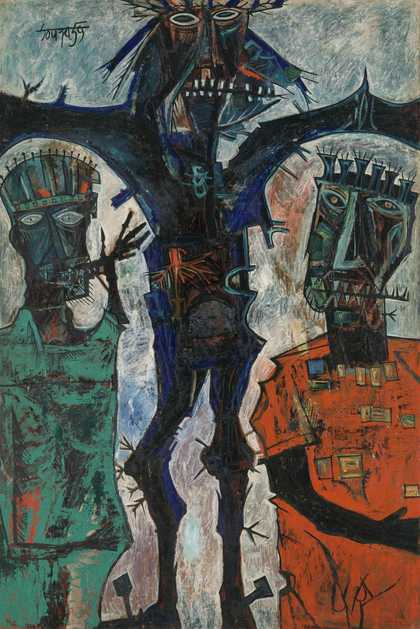
F.N. Souza, Crucifixion 1959. Tate. © The estate of F.N. Souza/DACS, London 2025.
Fear and Freedom 1940–1965
14 rooms in Modern and Contemporary British Art
The Post-War era is one of immense social change and dramatic geopolitical realignment. Artists give visual expression to the experiences of loss, destruction and displacement, yet also to independence and freedom
The Second World War is the deadliest conflict in human history. Upwards of 85 million people die, mostly civilians. Six million European Jews are murdered by Nazi Germany, alongside other persecuted people. Colonial empires are dismantled and new superpowers – the Soviet Union and the United States – arise. They bring the threat of global nuclear annihilation. The war’s aftermath is a period of existential crisis and dread. It is also an era of freedom, as old beliefs and certainties are shattered, and former colonies in Africa, Asia and the Caribbean become independent nations.
Artists respond in different ways to the experience of the war and its consequences. The body, in all its vulnerability, is a major subject. Some artists produce intensely observed and expressive representations of the human figure. Others create landscapes and cityscapes marked by combat, displacement or alienation, conveying a sense of turbulence.
After the war, Britain calls for people from the Commonwealth to help rebuild the ‘motherland’. The first of the Windrush generation arrive from the Caribbean in 1948. Many are greeted with discrimination. Other people flee conflict: up to a million people lose their lives in violence when Britain divides India along religious and ethnic lines ahead of independence in 1948. Artists arrive from all over the world, working, studying and teaching in Britain. Some reflect the spirit of decolonisation in their radically modern paintings and sculpture.
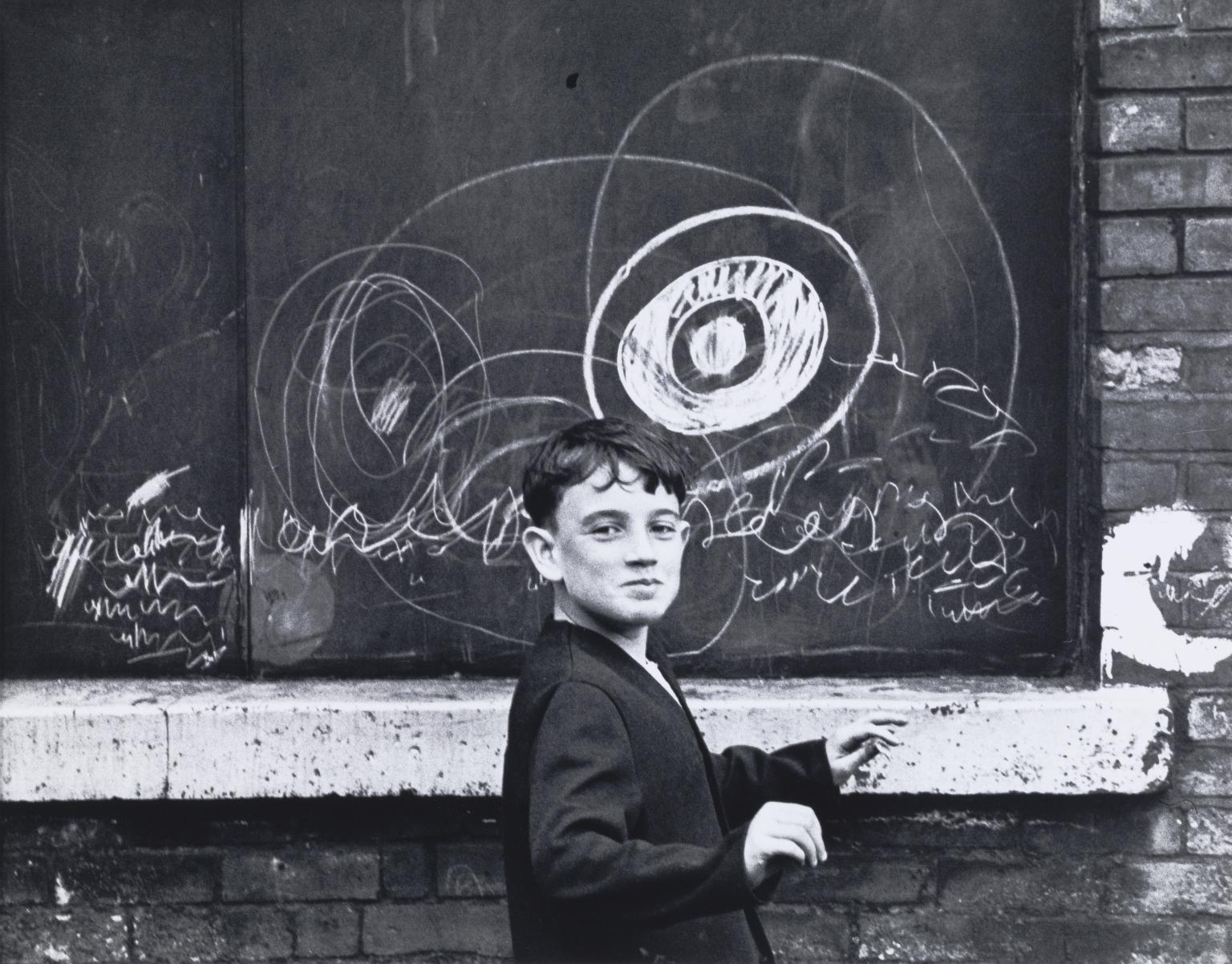
Shirley Baker, Manchester 1967
These photographs depict daily life on the streets of Manchester and Salford, where Shirley Baker grew up. Her intimate and unstaged portraits capture children at play in the streets around their homes. At the time, these areas were undergoing rapid change as dilapidated terraces were demolished to make way for new towers and communities were displaced. Baker recalled, ‘nobody seemed to be interested in recording the face of the people or anything about their lives’.
Baker is thought to have been one of very few women practicing street photography in Britain during this period.
Gallery label, January 2025
1/20
artworks in Fear and Freedom
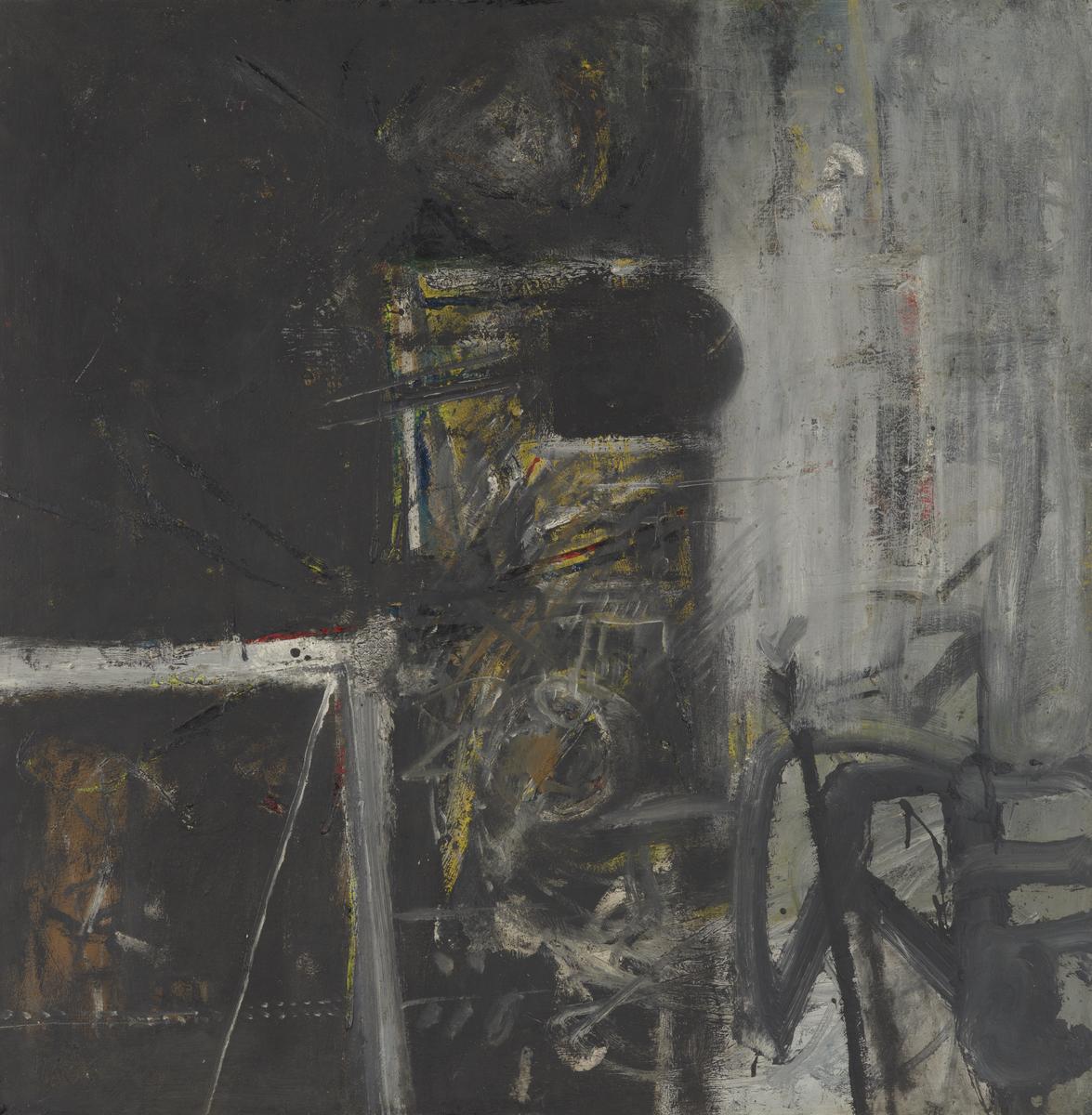
Alan Davie, Black Mirror 1952
The colour black had a special meaning for Alan Davie following a brief illness in 1946 during which he was temporarily blind. He described this traumatic visual experience as 'whiteness', while black came to signify 'infinity, and the depth of life'. At this time, Davie produced each painting swiftly and violently through a 'flash of inspiration'. He resisted the notion of pure abstraction and his title emphasises this position, offering his image as a ‘mirror’ of reality.
Gallery label, January 2025
2/20
artworks in Fear and Freedom

Dame Barbara Hepworth, Pelagos 1946
Pelagos (‘sea’ in Greek) was inspired by a view of the bay at St Ives in Cornwall, where two stretches of land surround the sea on either side. The hollowed-out sculpture has a spiral form resembling a shell, a wave or the roll of a hill. Hepworth wanted the taut strings to express ‘the tension I felt between myself and the sea, the wind or the hills’. She moved to Cornwall with her husband, painter Ben Nicholson in 1939 and produced some of her best-known sculpture inspired by its wild landscape.
Gallery label, April 2019
3/20
artworks in Fear and Freedom
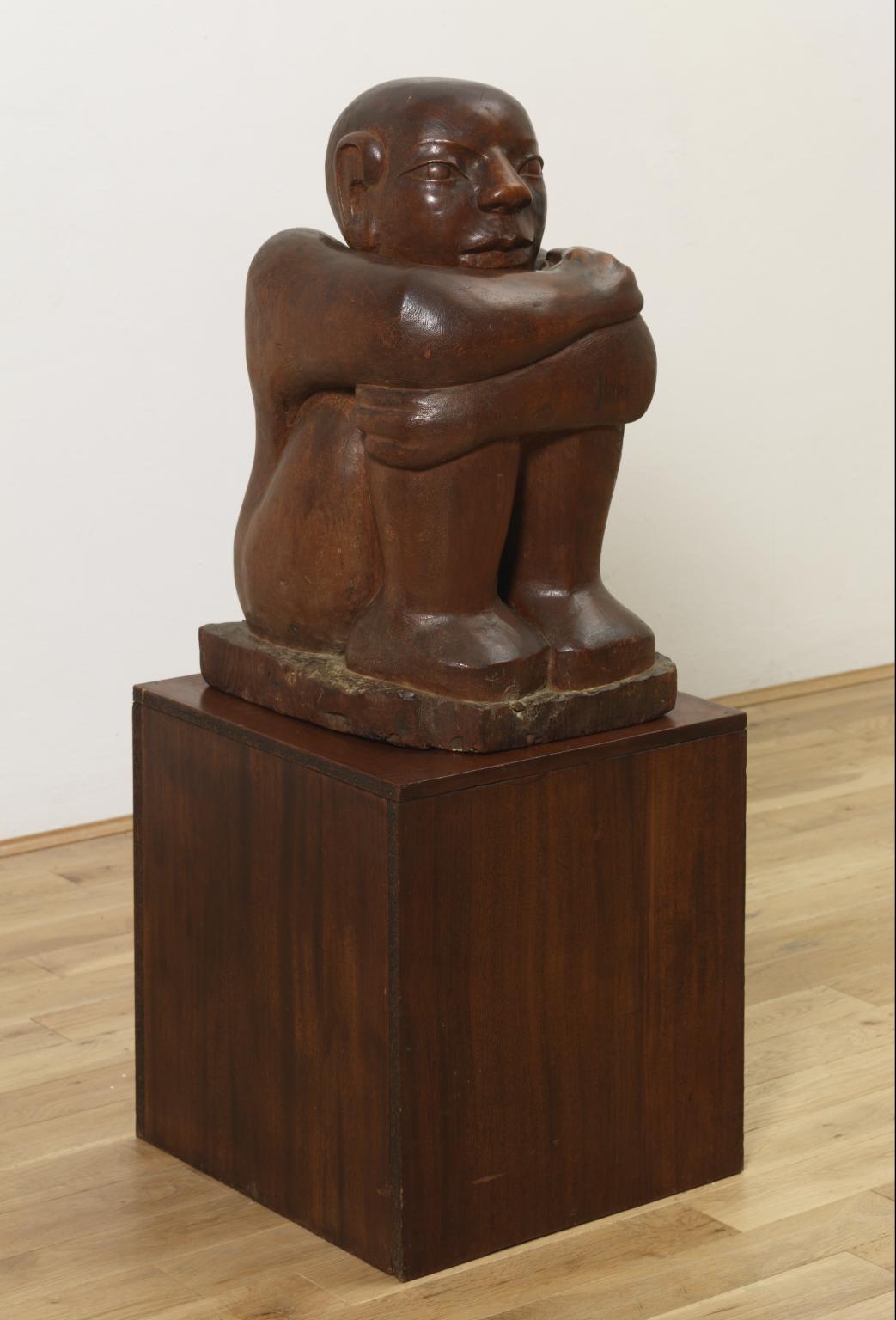
Ronald Moody, The Onlooker 1958–62
The Onlooker is Ronald Moody’s image of the artist’s role in society. He often used found pieces of wood. He carved this work from teak wood from a ship’s fender. Moody used the grain of the wood to direct his carving. The grain provides the lines of force that complement the stillness of the posture. It gives a sense of the animation of the mind. Moody said his work reflected his experience and presence in Europe and the Caribbean – a perpetual state of friction.
Gallery label, September 2023
4/20
artworks in Fear and Freedom
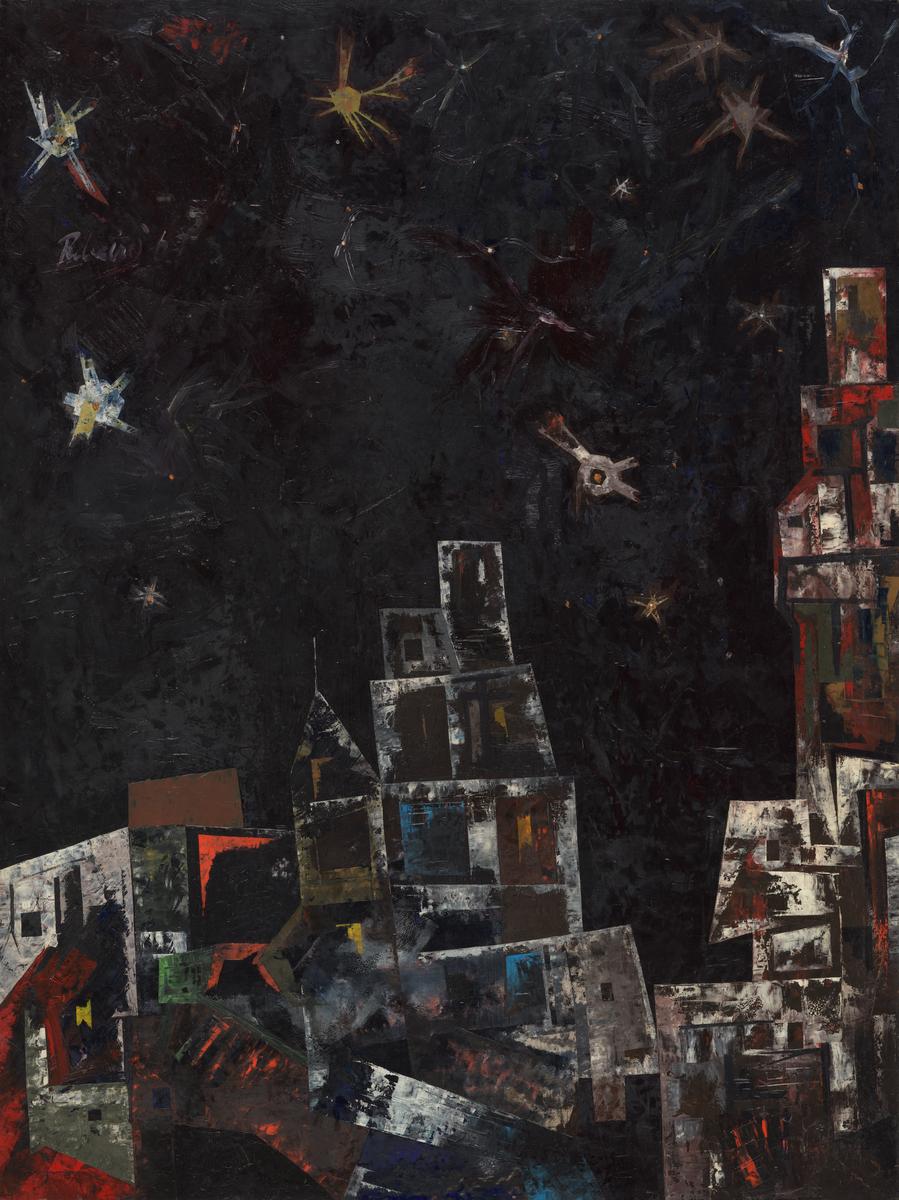
Lancelot Ribeiro, Cityscape (Night) 1963
The night sky dominates much of this painting, appearing as a black expanse scattered with twinkling white and yellow stars. Beneath the sky, stacked geometric shapes form oddly-angled towers. Landscapes are a major theme throughout Lancelot Ribeiro’s work, particularly in the late 1950s and early 1960s. He said, ‘None of these landscapes are of actual places but a sort of collective experience ... My first influences ... were the churches and statuary of the Catholic church in Goa along with the symbolic ritual that went with it’.
Gallery label, January 2025
5/20
artworks in Fear and Freedom
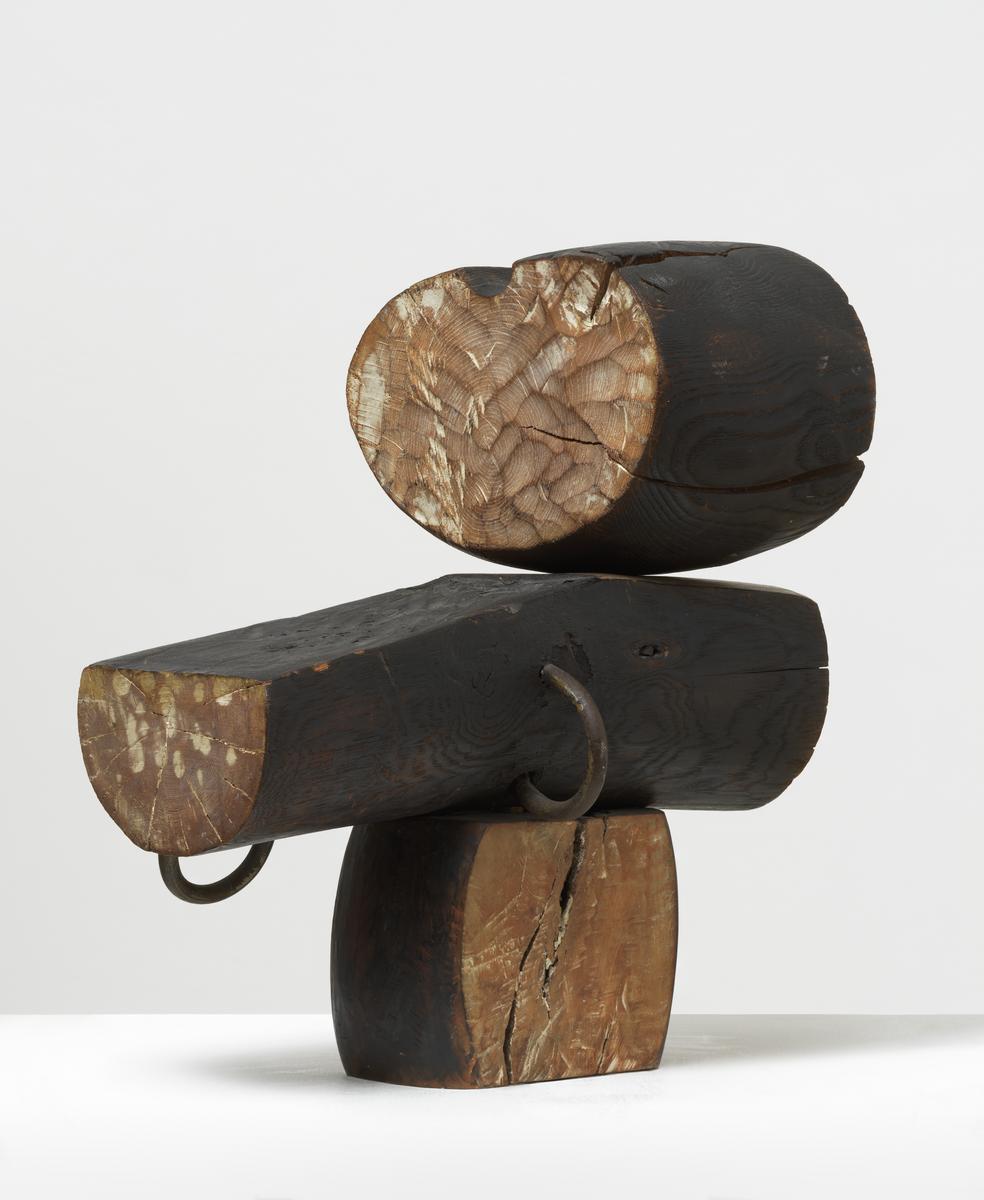
Kim Lim, Sphinx 1959
The title of this work speaks of Kim Lim’s love of ancient artefacts. It evokes a mythical hybrid creature, with the head of a human and the body of a lion. While still a student, Lim began to salvage, carve and assemble off-cuts she found in wood yards. This allowed her to create art from building blocks which already had forms and histories. She then combined them into bold and playful configurations. Here, Lim scorched the surface of the wood so different sections would have distinctive textures and reflect the light differently
Gallery label, September 2023
6/20
artworks in Fear and Freedom
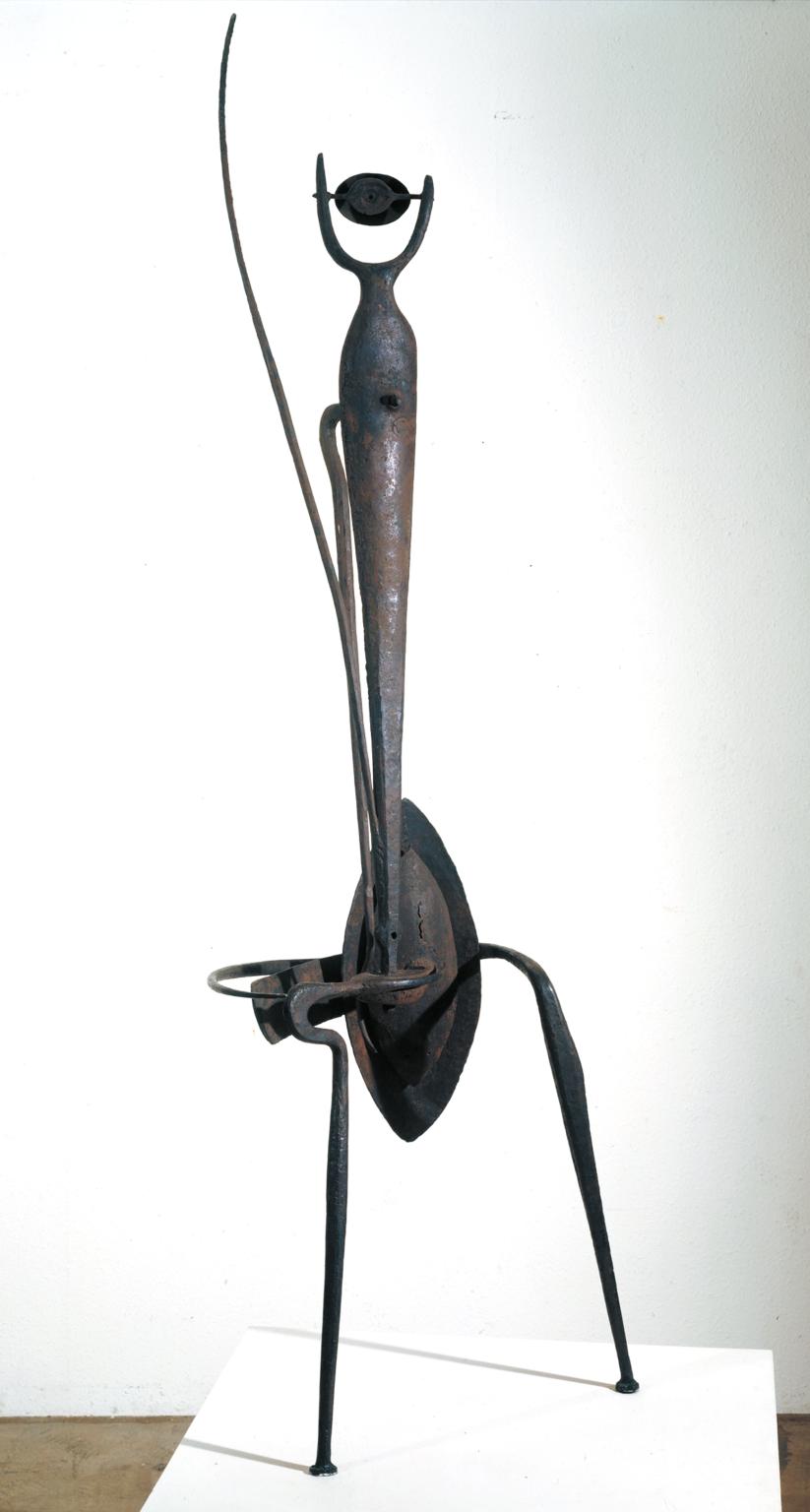
Reg Butler, Woman 1949
The elongated and spiky shape of Woman recalls the body of an insect. It is one of the first large-scale figures Reg Butler made and its eerie presence is typical of his late-1940s and early-1950s style. Butler referred to his early works as ‘symbolic structures’. He was partly inspired by the radio and radar towers that appeared around the south coast of Britain during the Second World War. He defined them as 'supra-human creatures born of the war ... remote inscrutable custodians of a landscape hostile to man’.
Gallery label, January 2025
7/20
artworks in Fear and Freedom
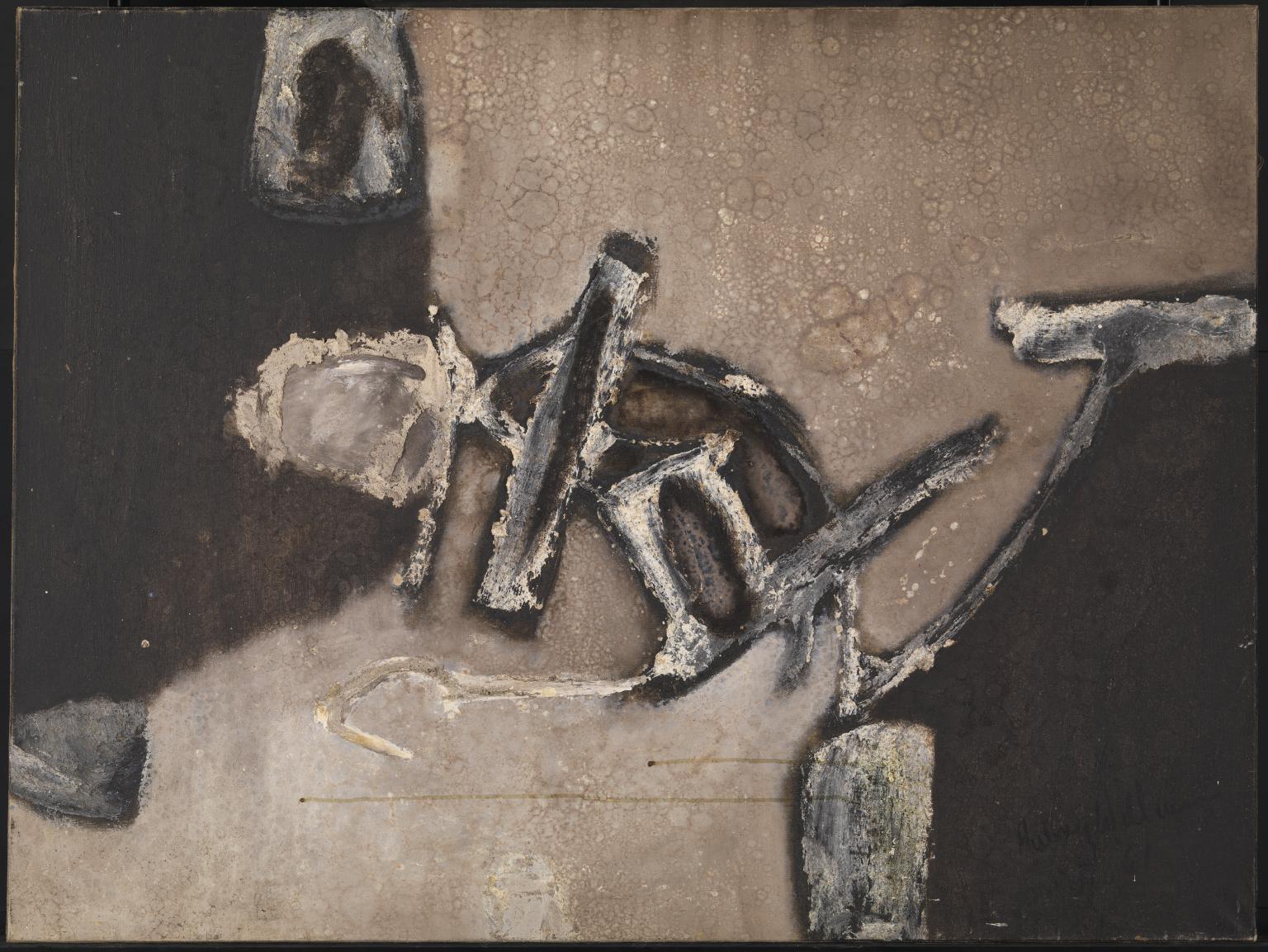
Aubrey Williams, Tribal Mark II 1961
Tribal Mark II depicts a group of bone-like forms set between two areas of deep shadow. Similar forms occur in other works by Aubrey Williams and could be read as symbols or glyphs. This painting is characteristic of the style the artist was exploring through the late 1950s and early 1960s as he engaged with developments in abstract art. The imagery also has its roots in Williams’s experiences as an agricultural field officer in Guyana in the late 1940s where he met Warao people, learned their language, observed their customs and rituals, and recorded their stories.
Gallery label, January 2025
8/20
artworks in Fear and Freedom

Lucian Freud, Girl with a Kitten 1947
This is one of eight portraits that Freud made of his first wife, the artist Kathleen (‘Kitty’) Garman (1926–2011). Freud sat very close to his subjects while painting them. Here he pays almost forensic attention to Garman, from the reflections in her pupils to the static energy of her wavy hair. In this psychologically charged composition, Garman holds a kitten by its neck in a tense grip, her white knuckles especially prominent.
Gallery label, September 2023
9/20
artworks in Fear and Freedom
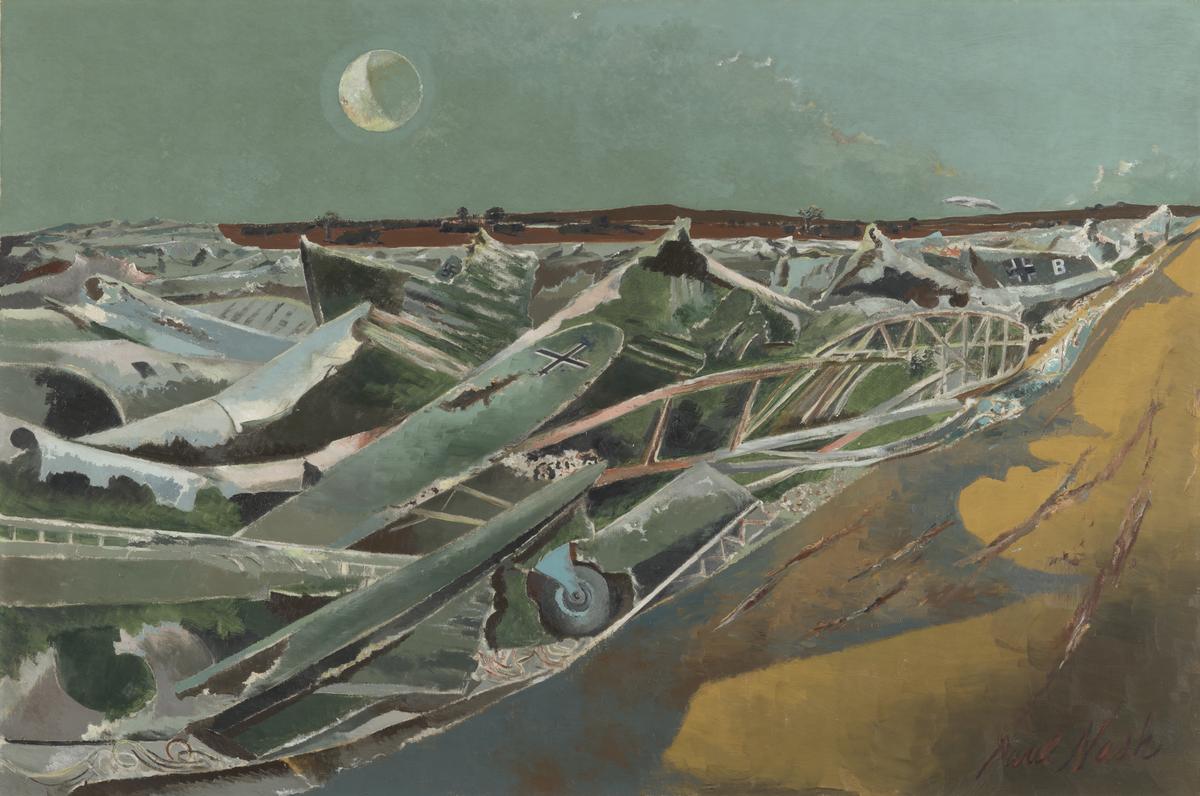
Paul Nash, Totes Meer (Dead Sea) 1940–1
Paul Nash painted this during the Second World War. It was inspired by a wrecked Luftwaffe aircraft dump at Cowley in Oxfordshire. He described the sight: ‘The thing looked to me suddenly like a great inundating sea... the breakers rearing up and crashing on the plain… nothing moves, it is not water or even ice, it is something static and dead.’ Nash, a British artist, chose to title the work in German.
Gallery label, September 2023
10/20
artworks in Fear and Freedom
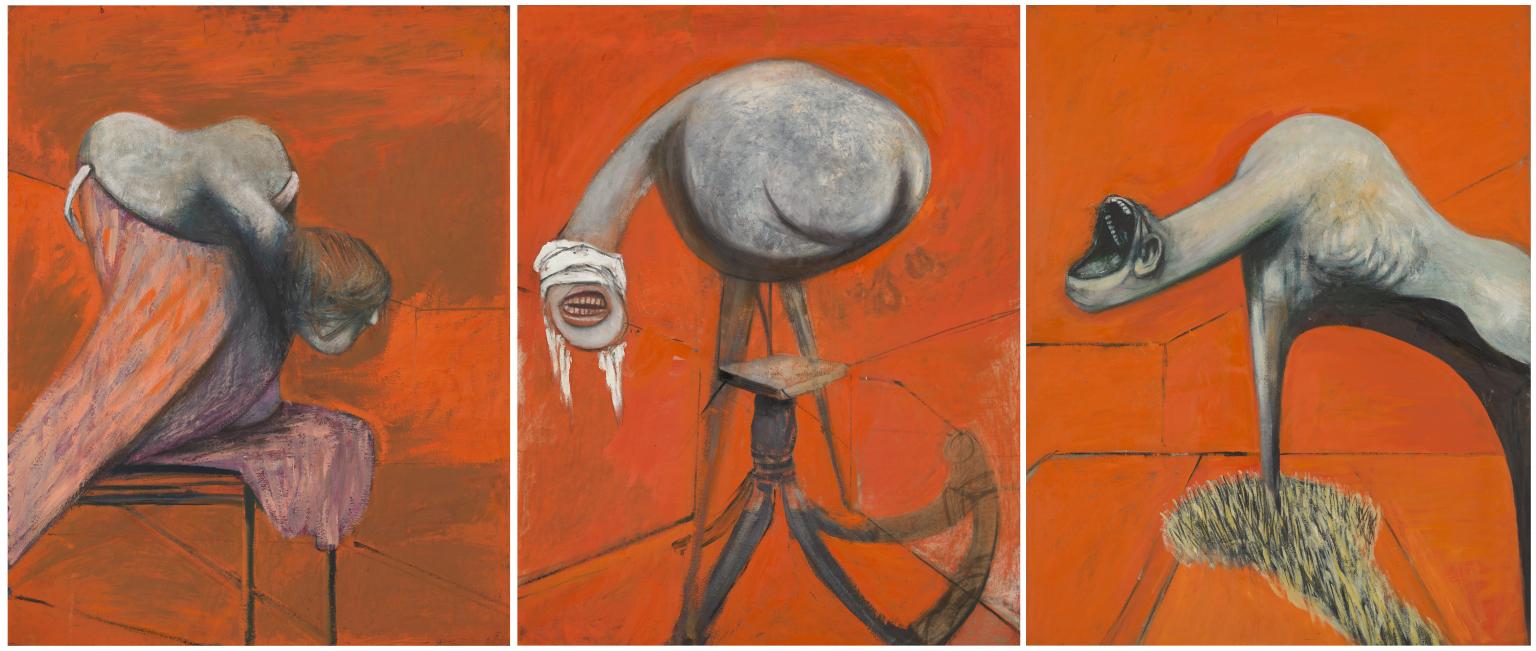
Francis Bacon, Three Studies for Figures at the Base of a Crucifixion 1944
Francis Bacon titled this work after the figures often featured in Christian paintings witnessing the death of Jesus. But he said the creatures represented the avenging Furies from Greek mythology. The Furies punish those who go against the natural order. In Aeschylus’s tragedy The Eumenides, for example, they pursue a man who has murdered his mother. Bacon first exhibited this painting in April 1945, towards the end of the Second World War. For some, it reflects the horror of the war and the Holocaust in a world lacking guiding principles.
Gallery label, September 2023
11/20
artworks in Fear and Freedom
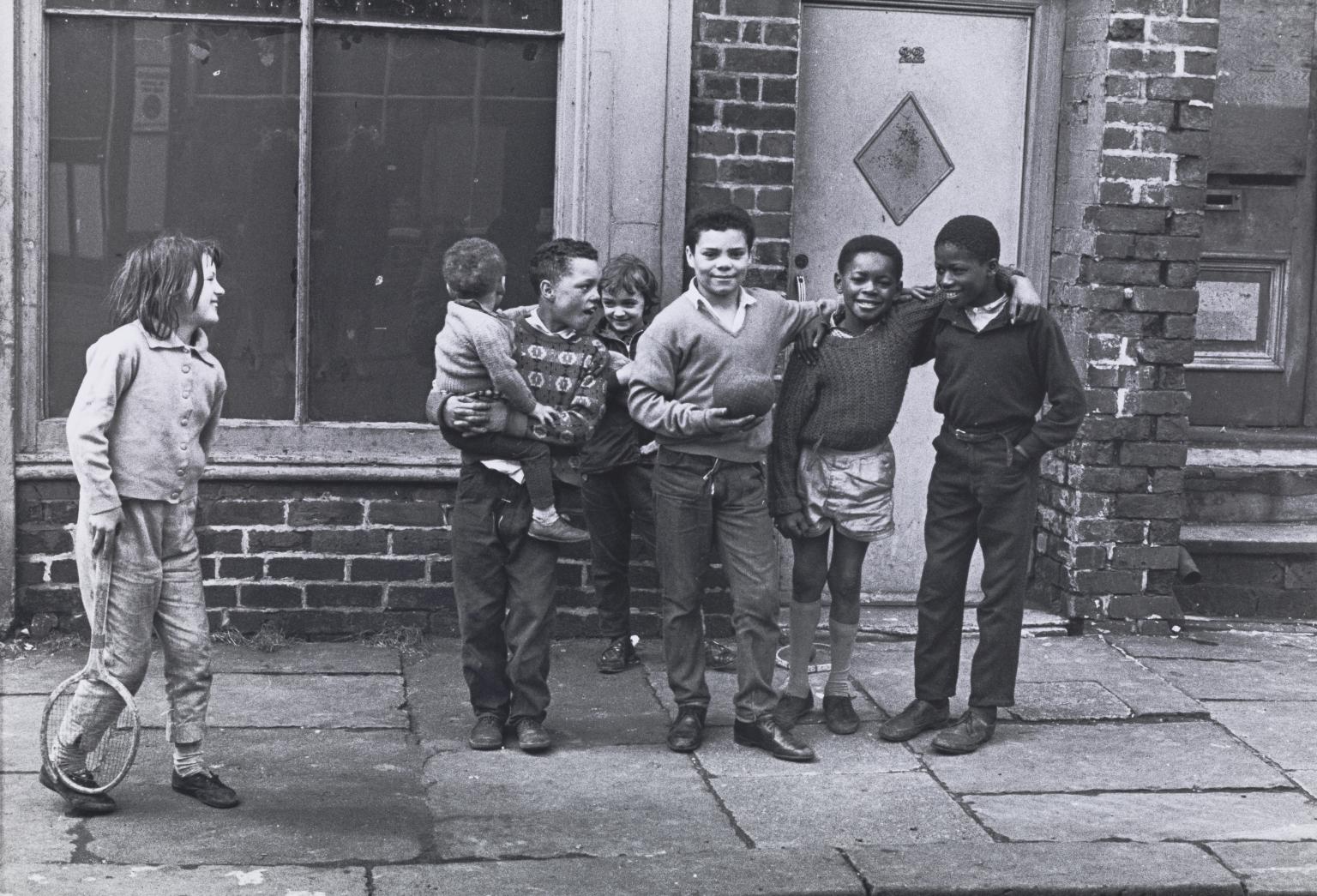
Shirley Baker, Manchester 1965
These photographs depict daily life on the streets of Manchester and Salford, where Shirley Baker grew up. Her intimate and unstaged portraits capture children at play in the streets around their homes. At the time, these areas were undergoing rapid change as dilapidated terraces were demolished to make way for new towers and communities were displaced. Baker recalled, ‘nobody seemed to be interested in recording the face of the people or anything about their lives’.
Baker is thought to have been one of very few women practicing street photography in Britain during this period.
Gallery label, January 2025
12/20
artworks in Fear and Freedom
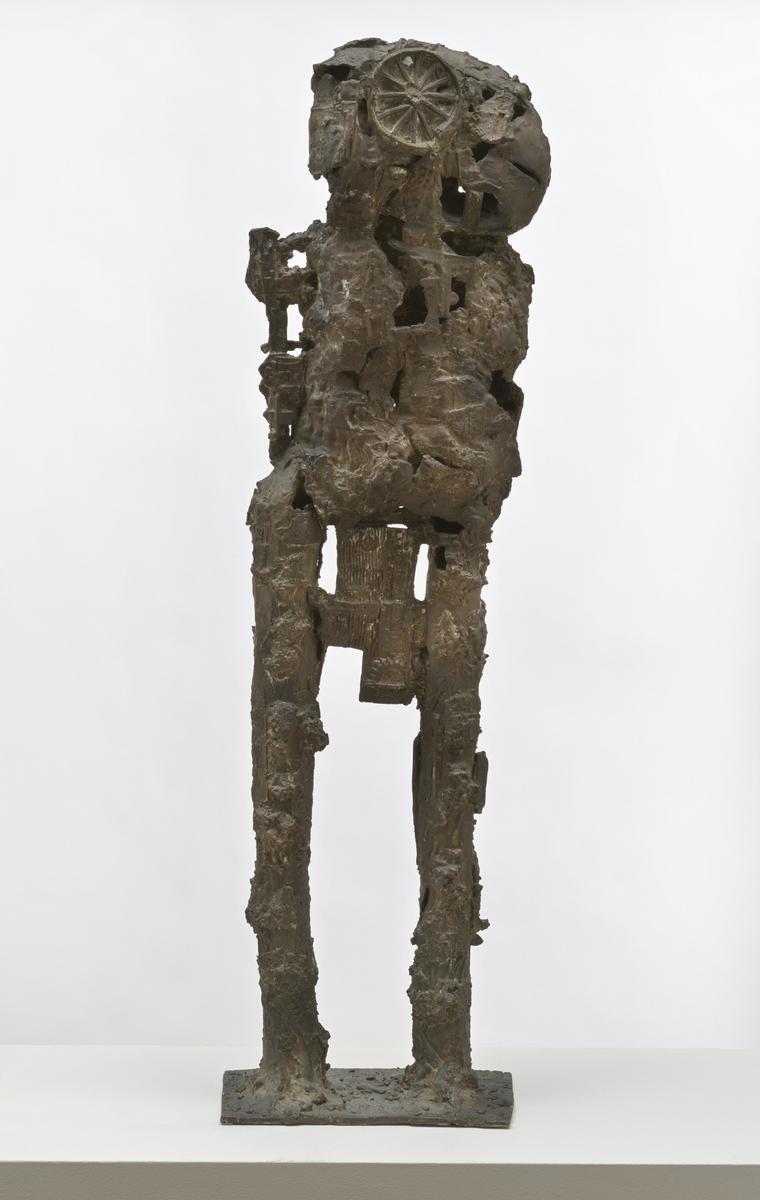
Sir Eduardo Paolozzi, Cyclops 1957
In classical mythology, the Cyclops was an immensely strong giant with a single eye in the centre of his forehead. The skin of this lumbering bronze figure is imprinted with broken machine-parts and other found debris. Paolozzi made it by pressing pieces of metal into a bed of moist clay, and then pouring molten wax into the clay mould. He constructed the model from these sheets of wax forms and finally cast it in bronze. Its pierced armour and dilapidated state has been seen as an ironic comment on the condition of man in the nuclear age.
Gallery label, September 2016
13/20
artworks in Fear and Freedom
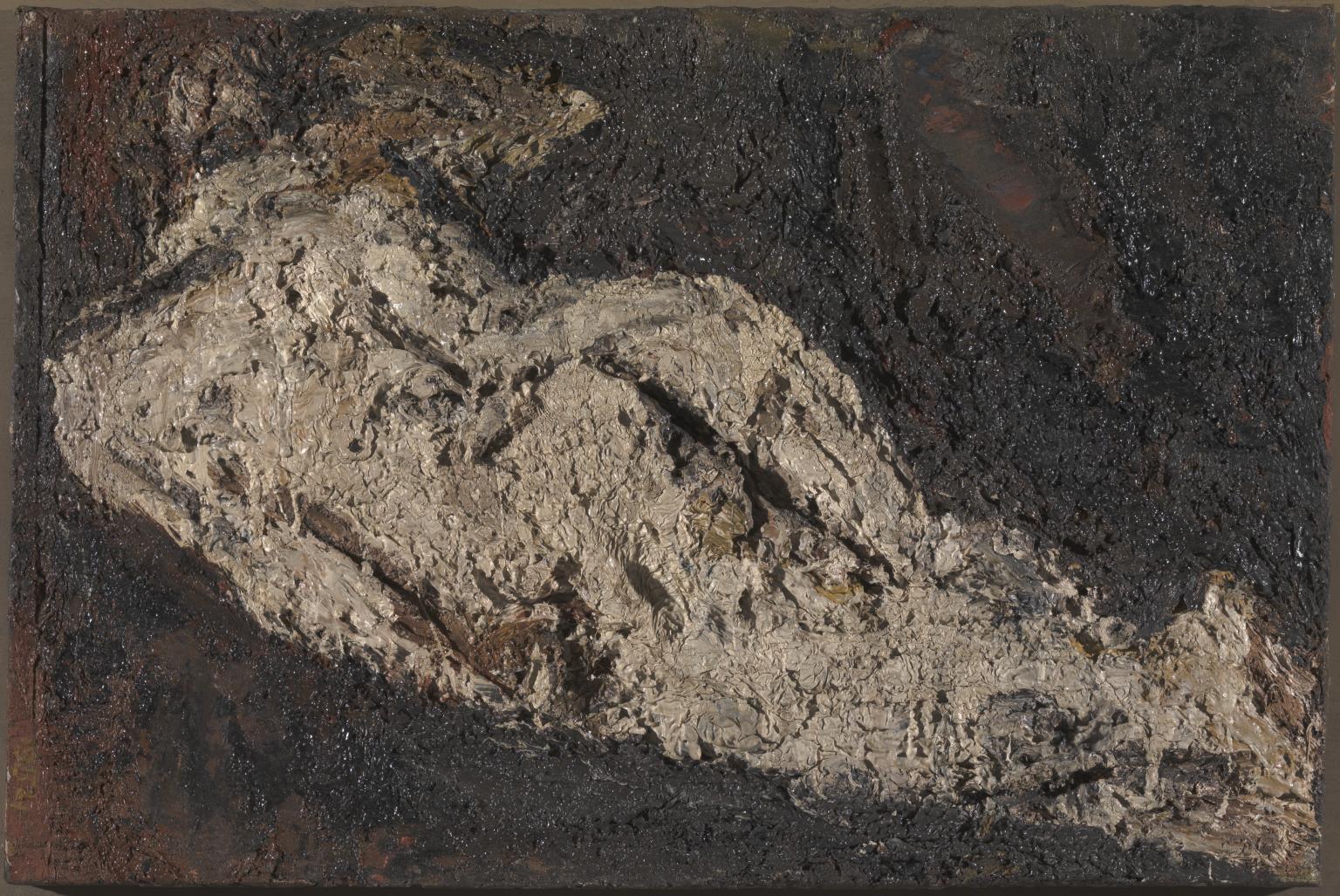
Frank Auerbach, E.O.W. Nude 1953–4
Frank Auerbach and Estella Olive West (E.O.W.) started a long relationship in 1948 when they were acting in the same play. She posed for him for over 20 years. This painting was executed over ten months of regular sittings. By applying oil paint over previous still-wet layers, Auerbach achieved a textured, almost sculptural rendering of the figure. Auerbach’s way of working creates a strong feeling of physical presence combined with a lively sense of process.
Gallery label, September 2023
14/20
artworks in Fear and Freedom
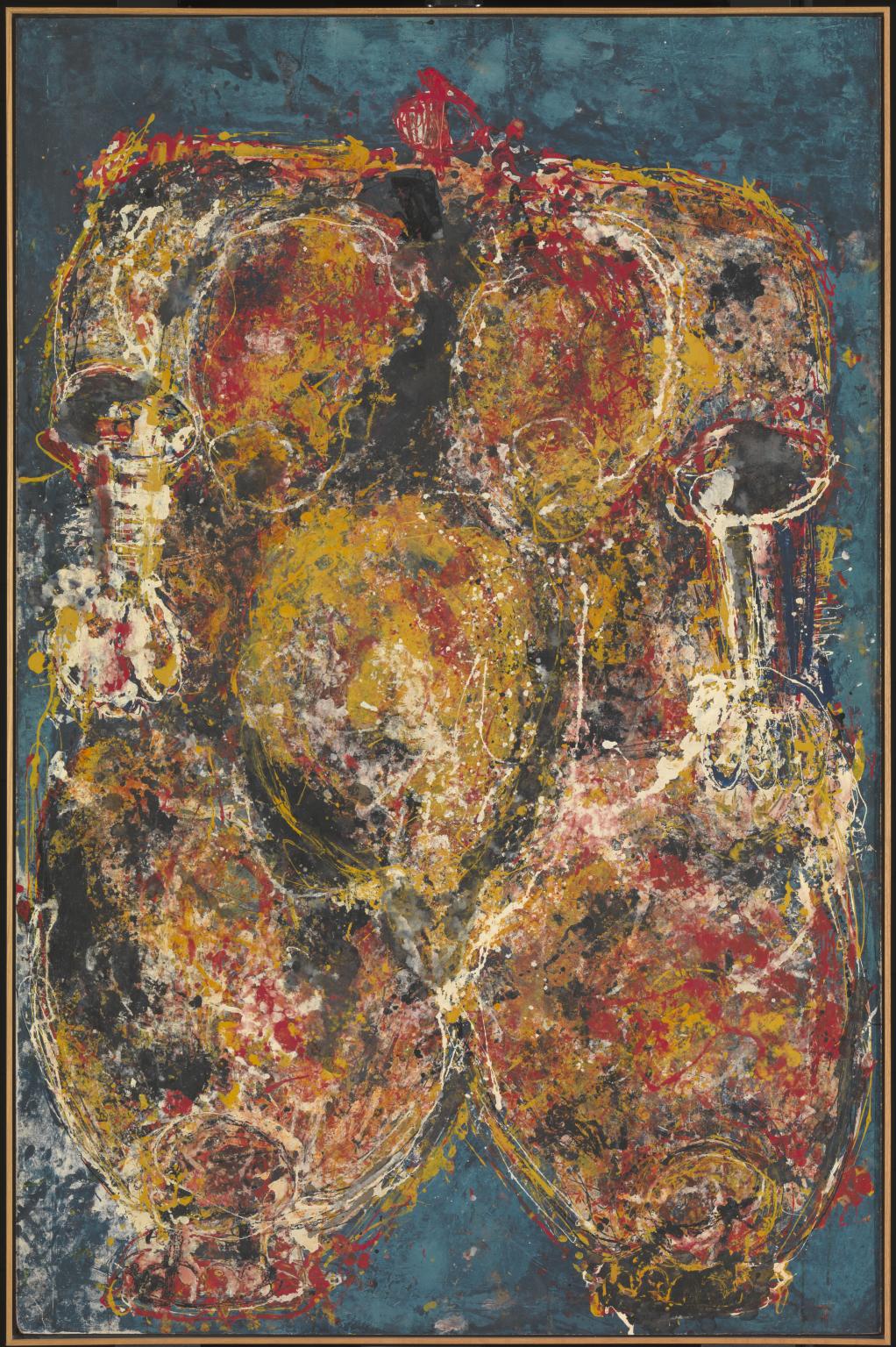
Magda Cordell, Figure (Woman) 1956–7
Magda Cordell’s Figure (Woman) breaks away from traditional representations of women in western art. When it was first exhibited, critics thought it embodied anxieties about nuclear war. More recently, her paintings have been interpreted as images of heroic femininity. In this reading, the distortions and textured surface signify the resilience of the human body in the face of injury and change.
Gallery label, September 2023
15/20
artworks in Fear and Freedom
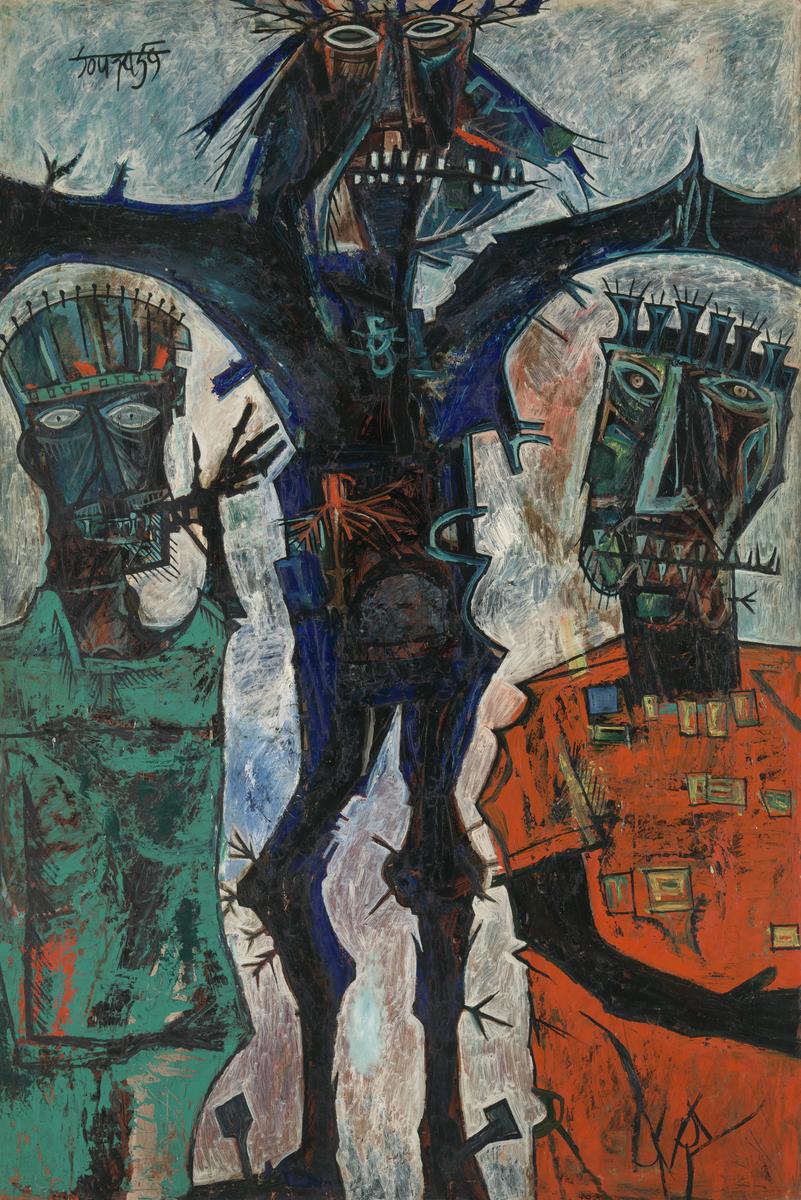
F.N. Souza, Crucifixion 1959
Brought up as a Roman Catholic, FN Souza’s faith became strained as he developed his secular understanding of life and suffering. Crucifixion presents Christ as a masked skeletal figure in dense black and dark blue pigments. His limbs are pinned to the outer edges of the frame to become the cross itself. The image relates to the artist’s personal religious struggle. Art historians have also discussed the painting in relation to the post-colonial condition, the contradiction of inherited faith and the deconstructed form of Modern Euroipean painting.
Gallery label, February 2025
16/20
artworks in Fear and Freedom
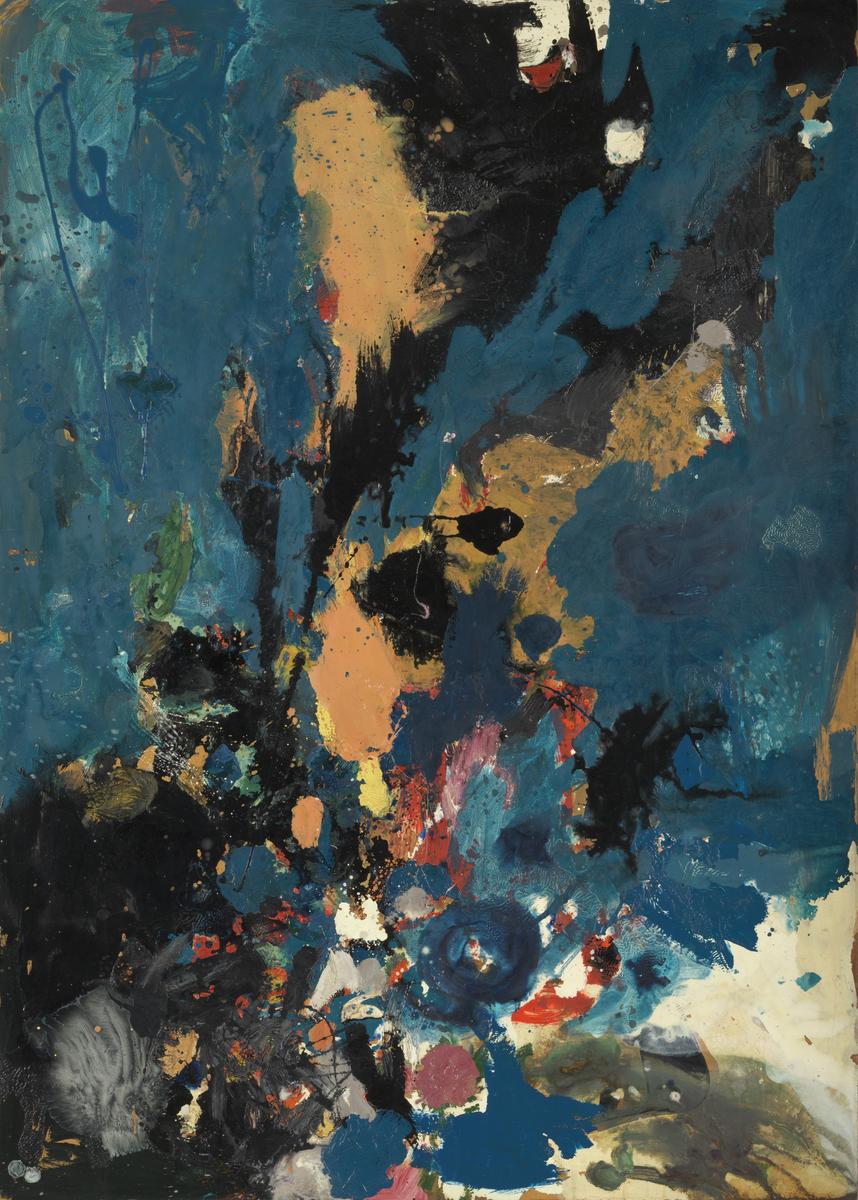
Gillian Ayres CBE RA, Distillation 1957
Gillian Ayres applied her paints with rags and brushes, and by pouring from the can and squirting from the tube. Influenced by photographs of the US painter Jackson Pollock making his drip paintings, she worked on this painting while it was flat on the floor. Ayres kept the paint fluid by blending it with turpentine, allowing her to manipulate it rapidly and spontaneously. She was interested in 'the idea of no composition’, balancing shape and colour without hierarchy ‘so that nothing is more important than anything else'.
Gallery label, January 2025
17/20
artworks in Fear and Freedom
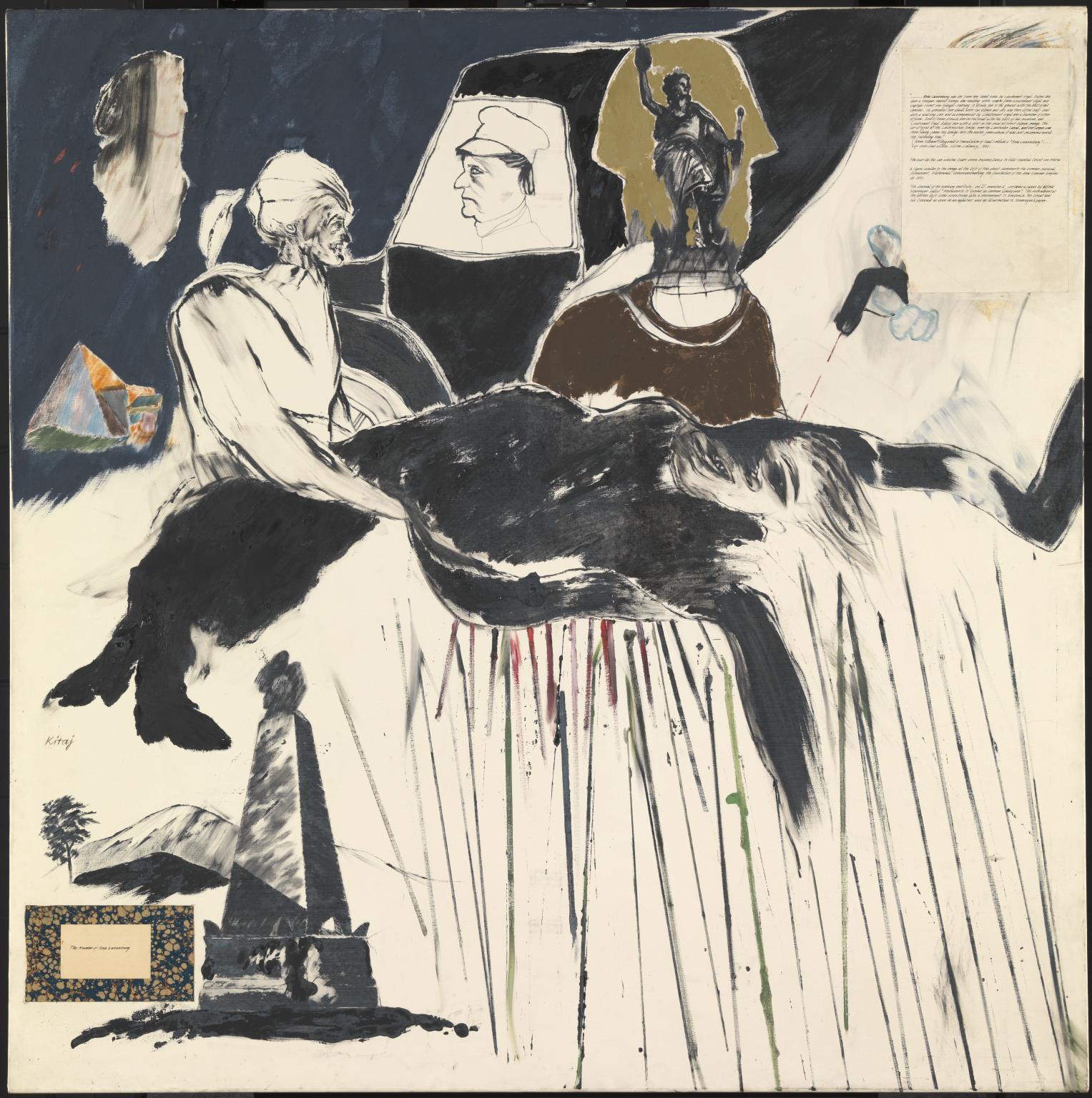
R.B. Kitaj, The Murder of Rosa Luxemburg 1960
This canvas is dominated by the corpse of Jewish activist Rosa Luxemburg, who helped found the Communist Party of Germany (KPD). Luxemburg was executed by the German military in 1919 and the top right corner of the painting includes a collaged account of her murder. RB Kitaj was also Jewish and associated Luxemburg with his grandmother Helene, who fled Vienna in the 1930s. The veiled figure at top left represents his grandmother Rose, who fled persecution in Russia. In the aftermath of the Holocaust, Kitaj felt that it was important to convey the ‘condition of fear and foreboding’ in which Jews often lived.
Gallery label, January 2025
18/20
artworks in Fear and Freedom
Shilpa Gupta, 1:7690, 3145 kms of Fenced Border, East 2024
19/20
artworks in Fear and Freedom

John Latham, Man Caught Up with a Yellow Object 1954
John Latham created the work by spraying black paint onto a grey background. He used an electrically operated pump which frequently broke down, spitting out large blobs of paint which he accepted as creating a ‘sense of the unexpected’. A fragmented figure seems to emerge from a haze. It could suggest deep anxieties, which were widespread in the 1950s, about alienation and the pointlessness of individual action. However, Latham saw the yellow object as a symbol of enlightenment, and the tiny dots of spray paint as the units of time that together constitute reality.
Gallery label, January 2025
20/20
artworks in Fear and Freedom
Art in this room


















Sorry, no image available

You've viewed 6/20 artworks
You've viewed 20/20 artworks
